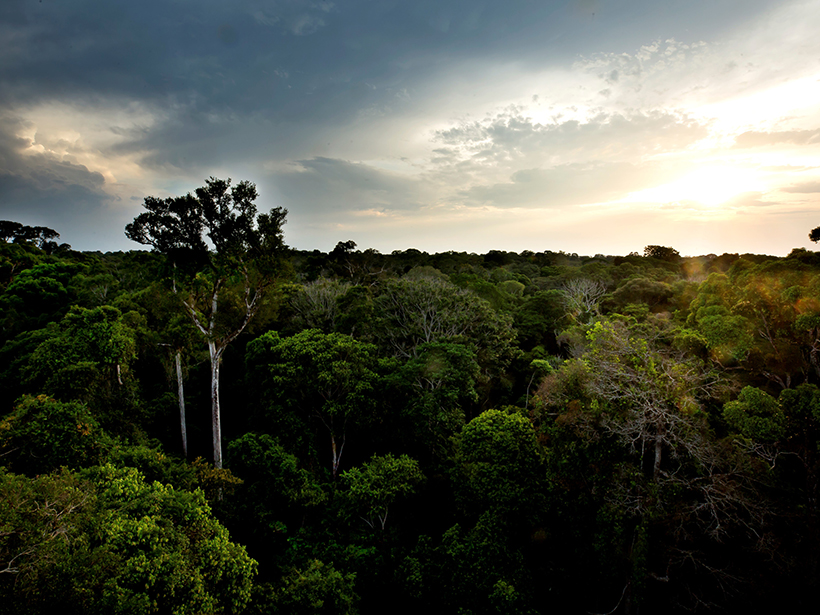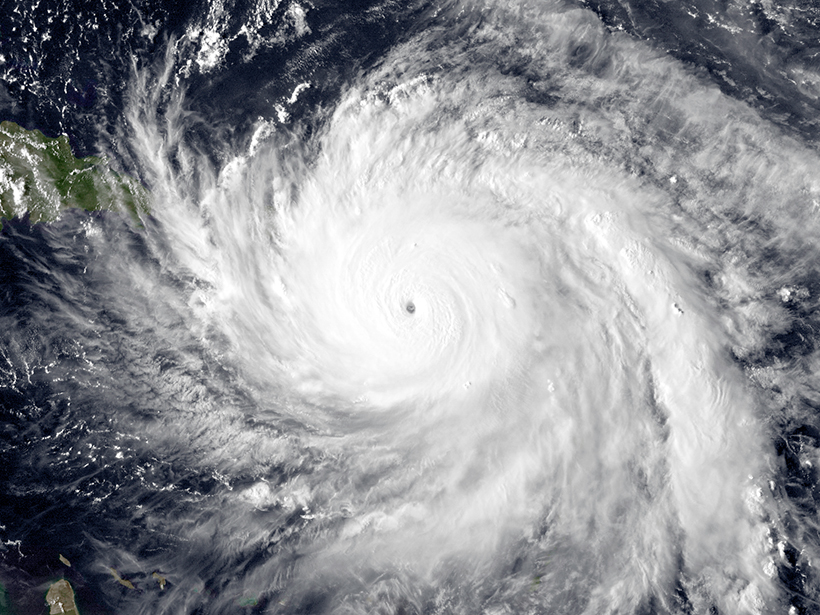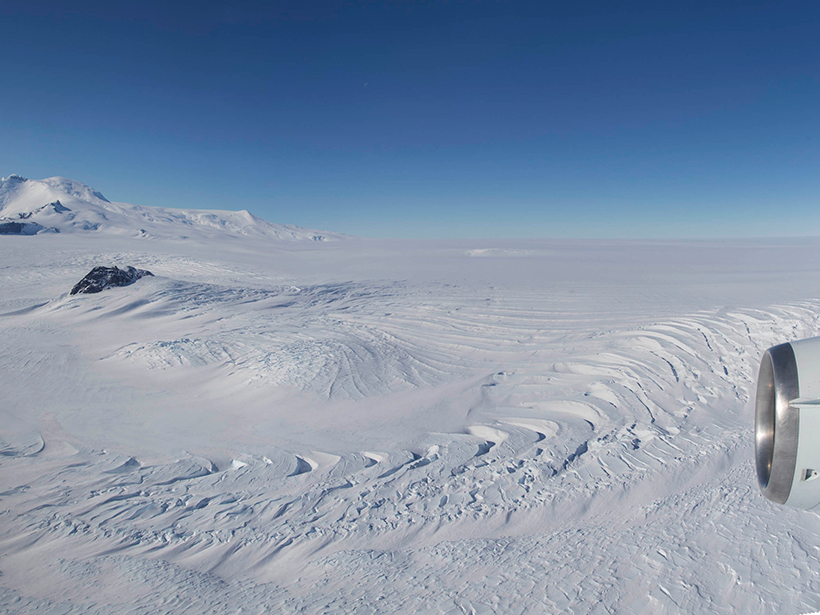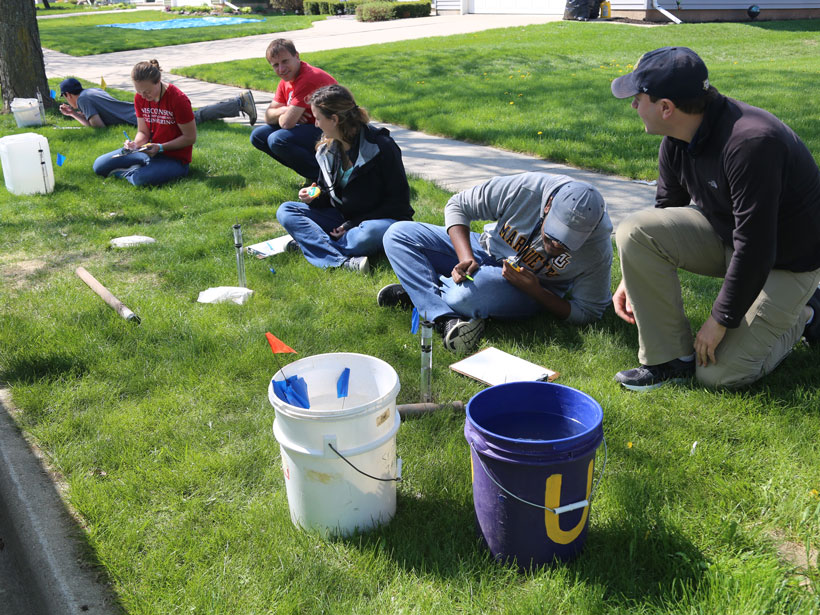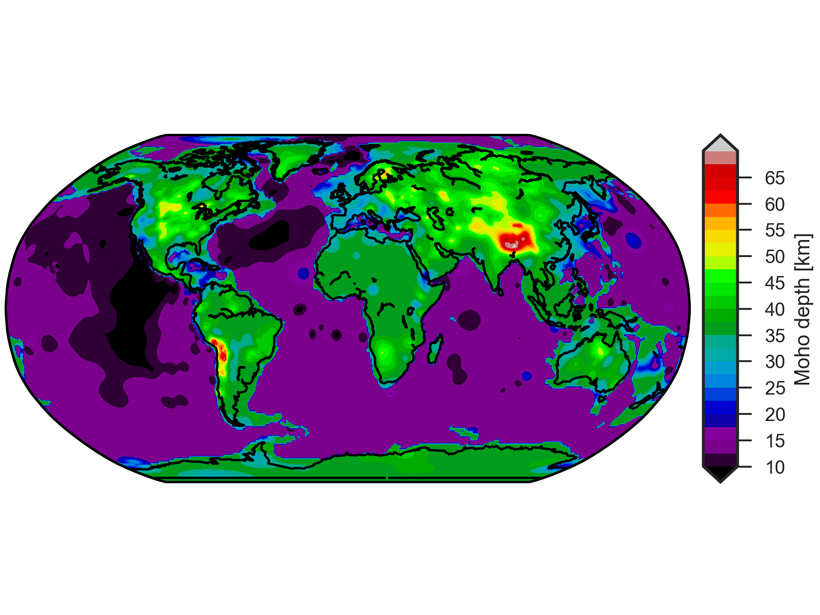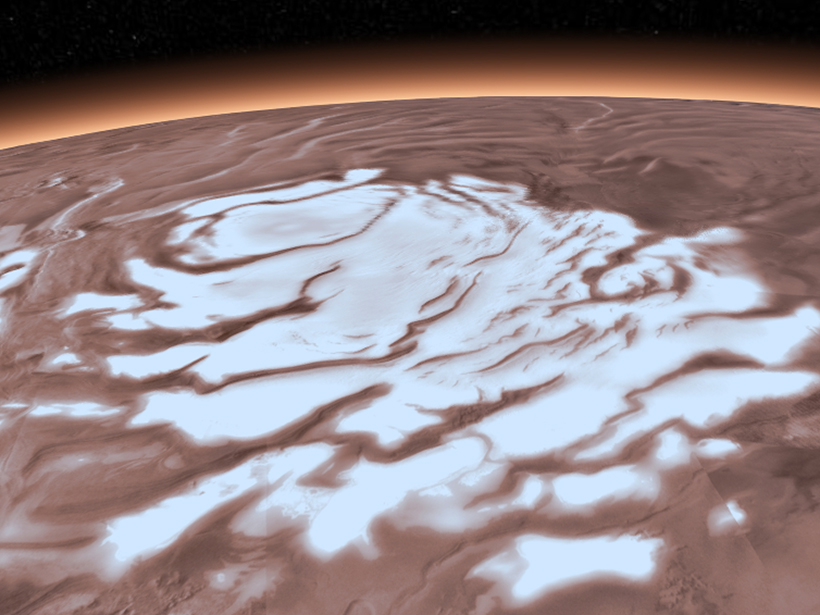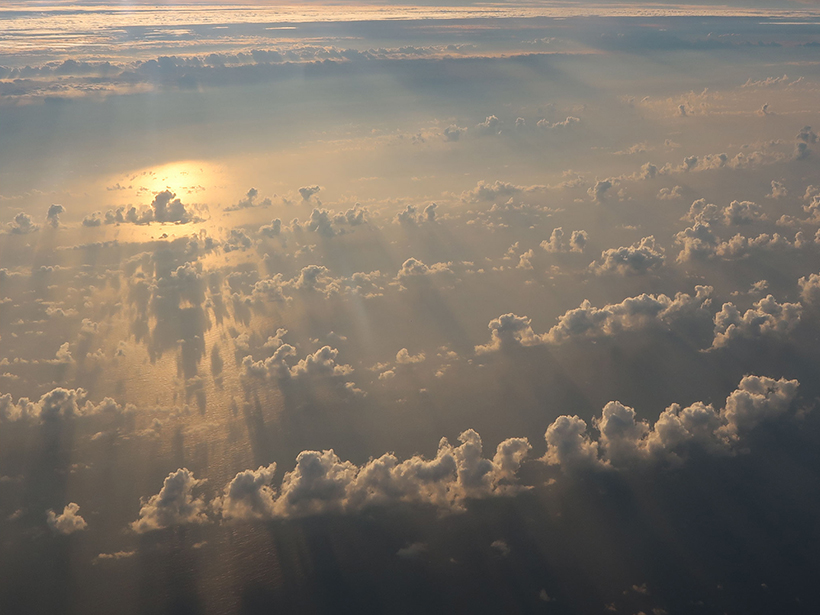Evapotranspiration is the exchange of water vapor between land and the atmosphere, and it is hard to measure and model. A new study shows promise for its estimation over large, vegetated landscapes.
Modeling
A Better Understanding of Tropical Cyclones
A new model of how anvil clouds form could improve short-term hurricane forecasts.
What’s Missing from Antarctic Ice Sheet Loss Predictions?
Accurately modeling melt rates in specific ice shelf locations is critical for forecasting how Antarctica’s ice sheet will respond to climate change.
Strategies to Improve Urban Hydrology
Cities can reduce surface runoff and increase groundwater recharge by encouraging their residents to implement simple, hydrologic modifications on individual buildings and single-family parcels.
New Global Crustal Model Built as Foundation for Future Studies
A new global crustal model and its corresponding uncertainty were obtained using minimum a priori information and a geostatistical approach.
Local Heat Source Needed to Form Liquid Water Lake on Mars
Thermal modeling suggests that active magmatism in the past few hundred thousand years could account for the presence of a large lake previously hypothesized beneath the Red Planet’s southern ice cap.
Forecasting Seismicity from Wastewater Disposal in Oklahoma
Mandated wastewater injection reductions in effect since 2016 are inadequate for preventing future, large-magnitude earthquakes in the state, according to a new induced seismicity model.
Improving Estimates of Long-Term Climate Sensitivity
New modeling casts doubt on the suitability of running experiments with fixed sea surface temperatures to understand the effects of cloud aggregation on Earth’s climate.
Formation of Sedimentary Deposits: Bypass Versus Mass Extraction
Grain size and sediment delivery pathways from the Ganges delta have been used to model downstream facies changes.
Reframing Sensitivity Analysis in Earth System Models
According to a new study, the performance metric–based methods currently used to evaluate dynamical model sensitivity are based upon faulty reasoning and need to be reenvisioned.

